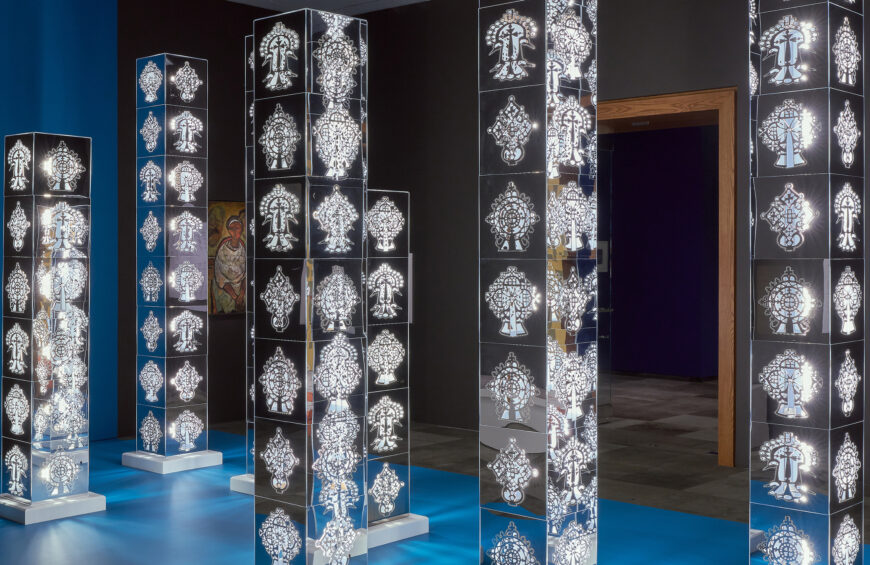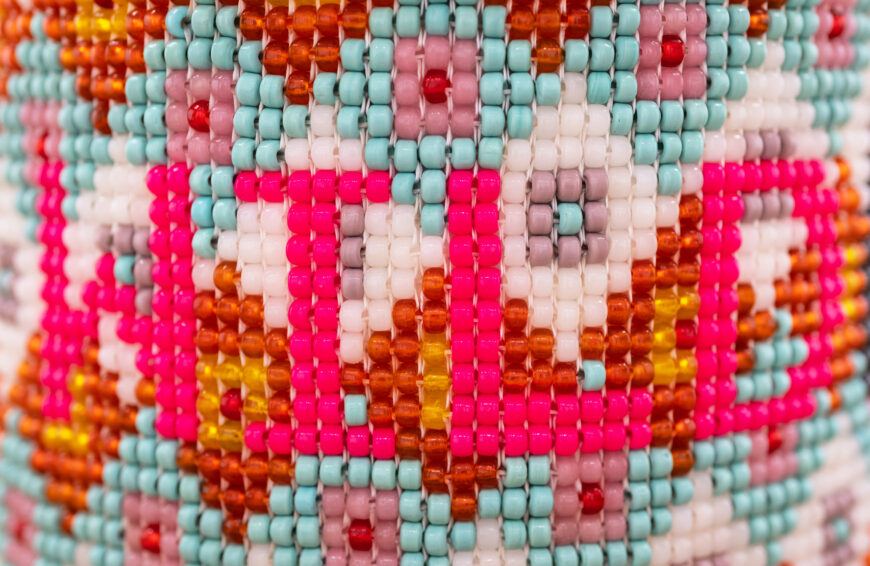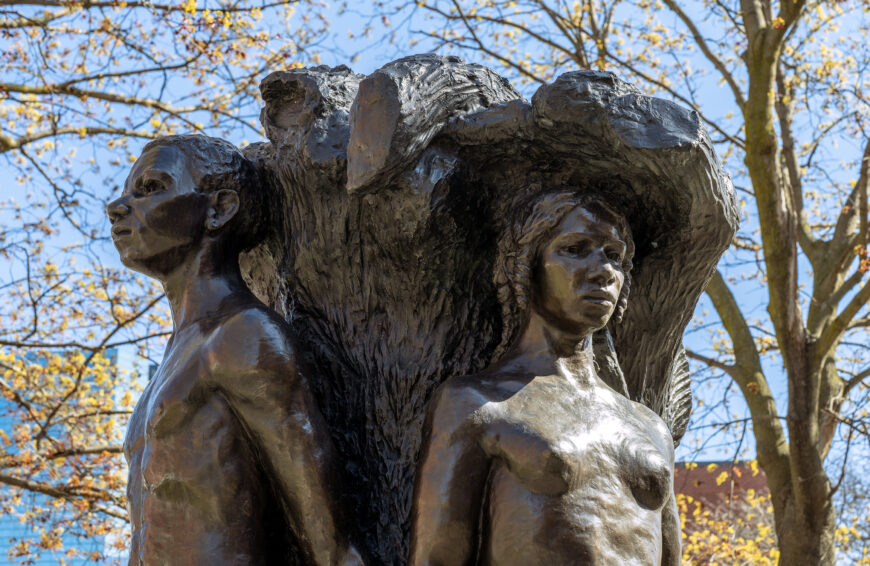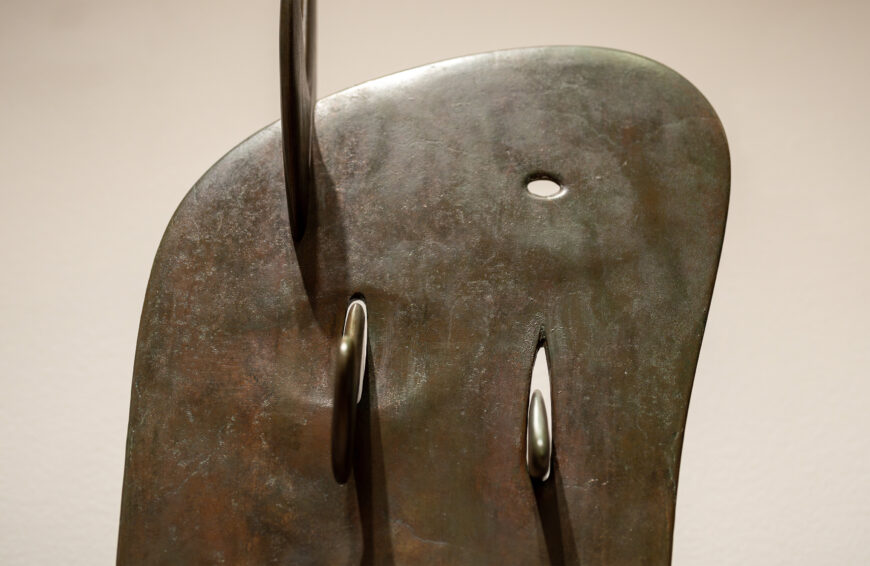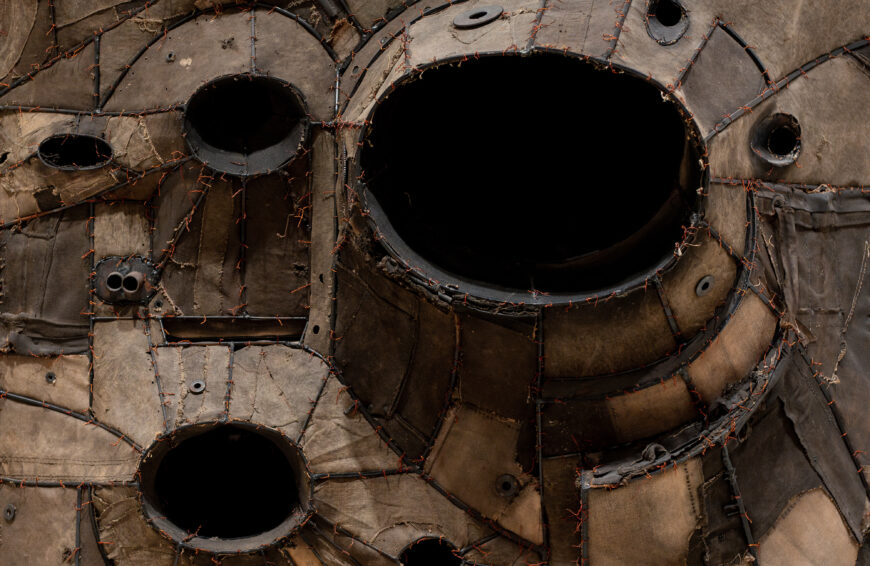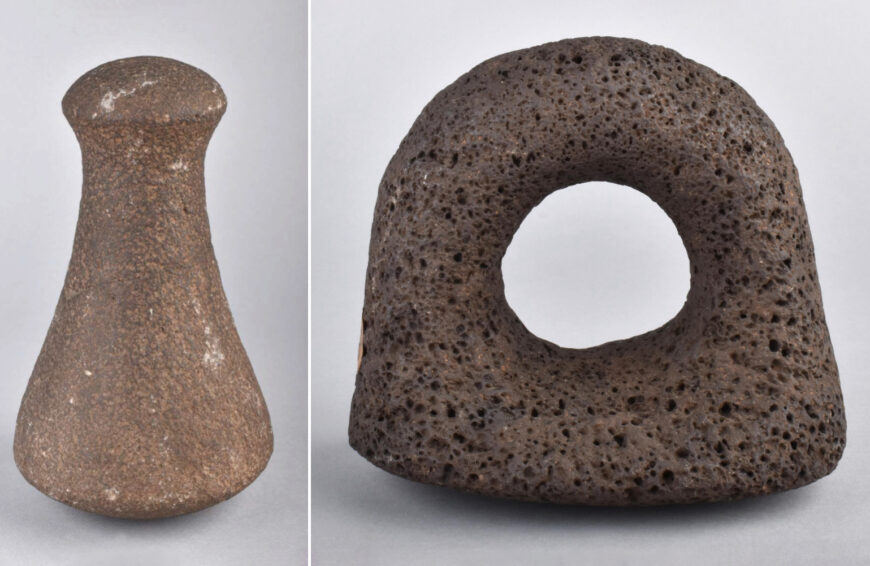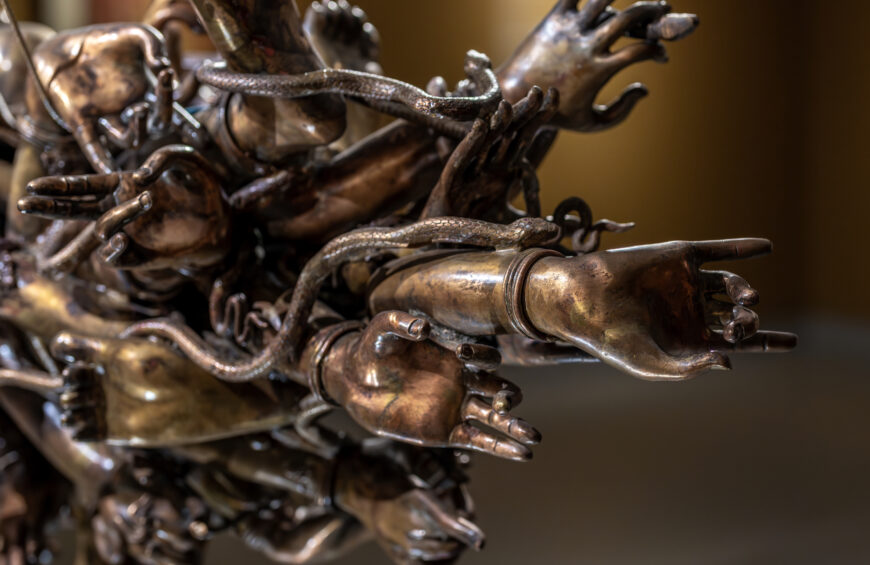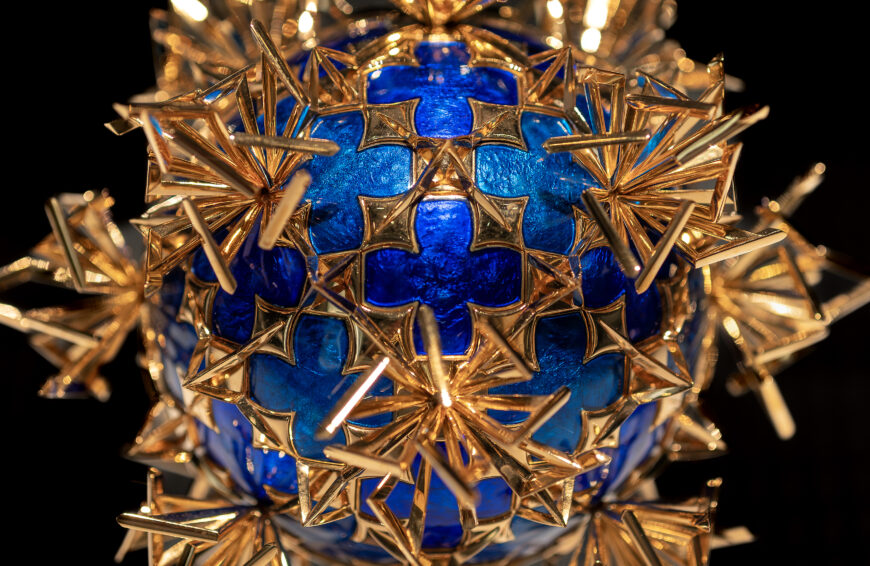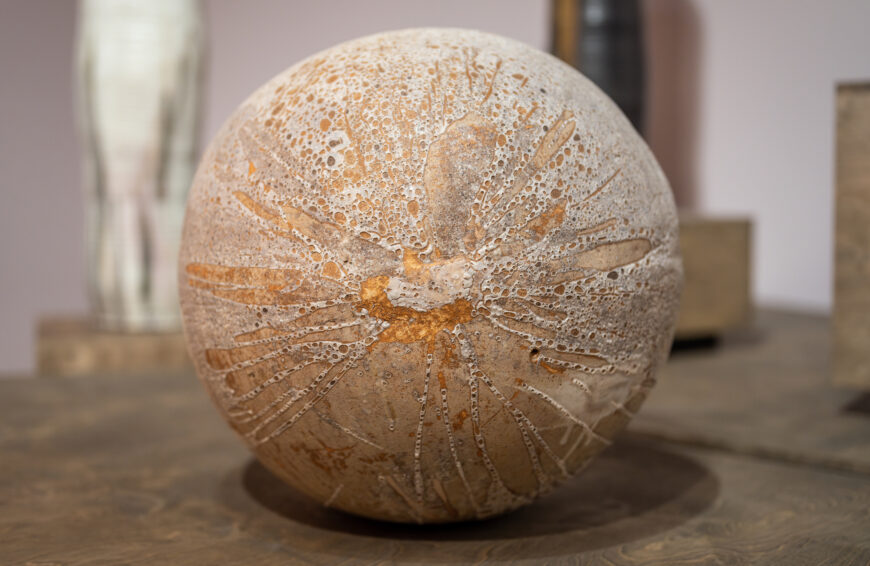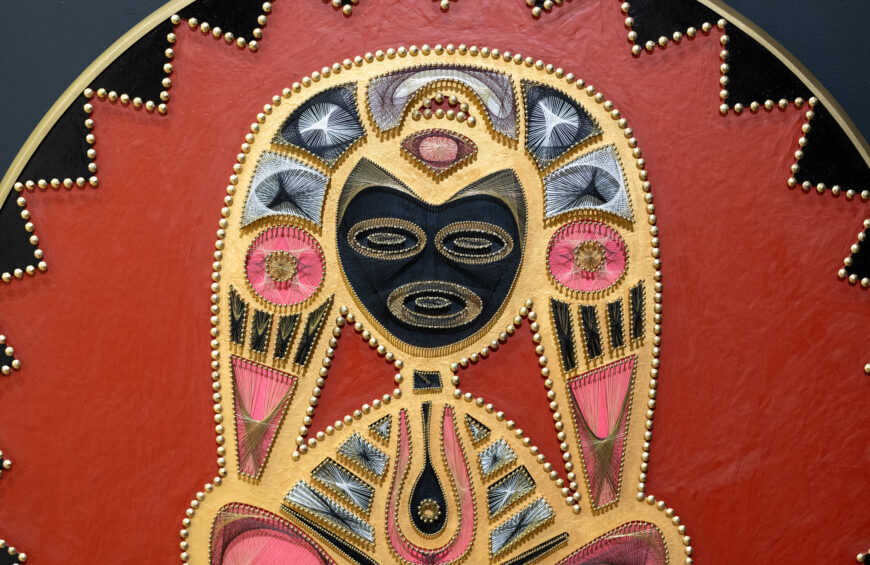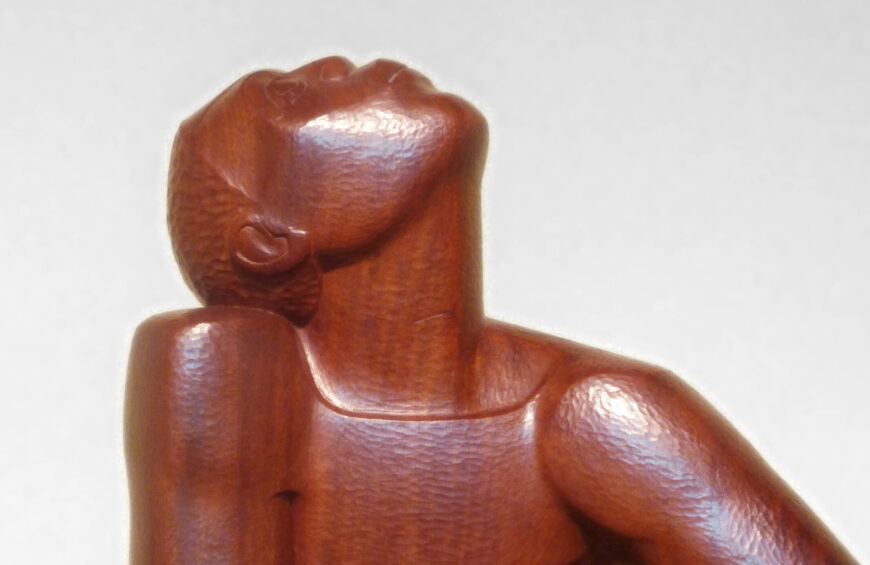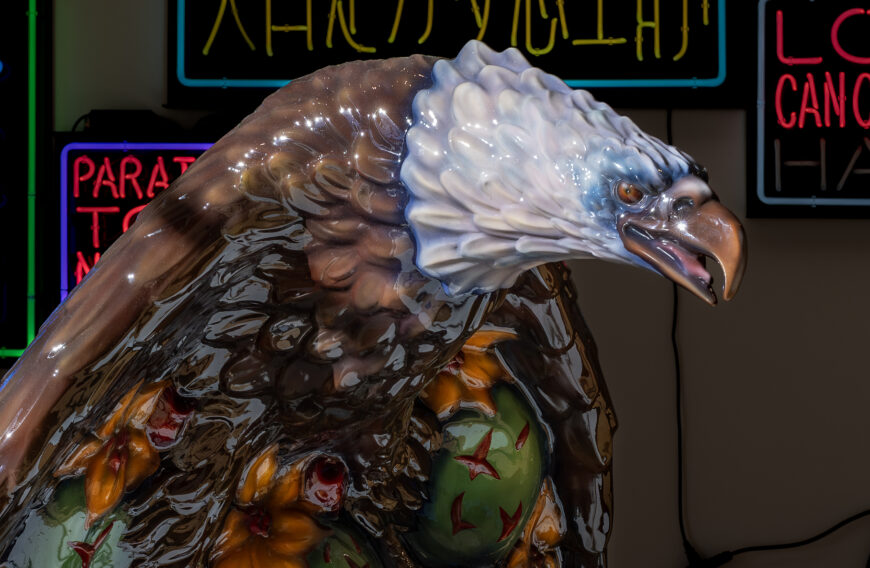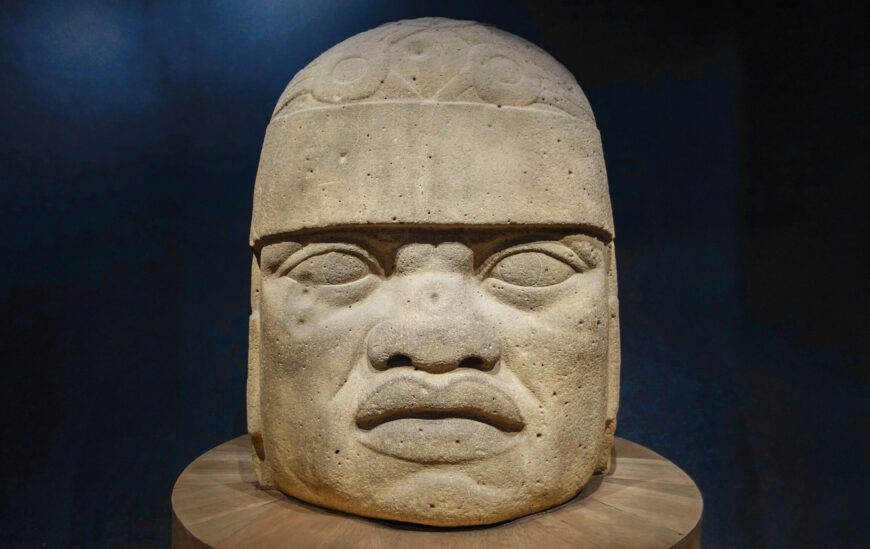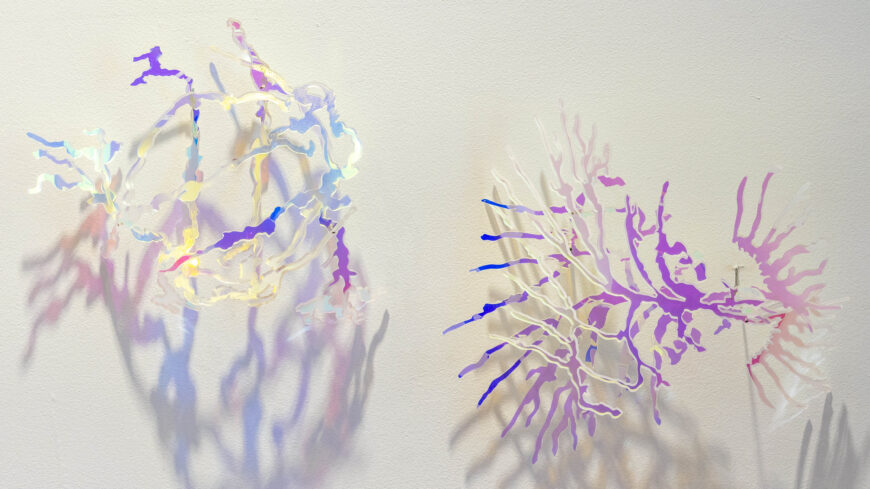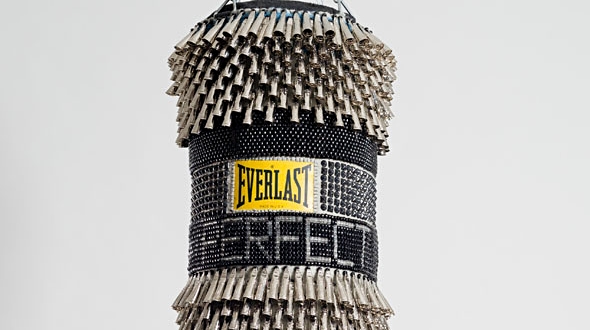Edmonia Lewis, The Old Arrow Maker, modeled 1866, carved c. 1872, marble, 50.8 x 35.6 x 35.6 cm (Crystal Bridges Museum of American Art)
Edmonia Lewis, The Old Arrow Maker
[0:00] [music]
Dr. Beth Harris: [0:04] We’re in the galleries at Crystal Bridges Museum of American Art, and we’re looking at a small marble sculpture by the artist Edmonia Lewis called “The Old Arrow Maker.”
Dr. Mindy Besaw: [0:15] We know from the title that this is a sculpture based on a passage from Longfellow.
Dr. Harris: [0:22] Henry Wadsworth Longfellow had written “The Song of Hiawatha” in the previous decade, and it was wildly popular. Every child in American schools was reciting it. Everyone would’ve known who these figures are.
Dr. Besaw: [0:35] The figures are Minnehaha and her father, the old arrow maker. He has flint in his hand and an arrow, as if he’s in the process of making an arrow. She’s plaiting mats. Both figures look up as if there is a presence in addition to them.
Dr. Harris: [0:53] Maybe this is a good moment to read the passage that the sculpture seems most directly based on.
[0:00]
“[0:59] At the doorway of the wigwam / Sat the ancient Arrow-maker, / In the land of the Dacotahs, / Making arrow-heads of jasper, / Arrow-heads of chalcedony. / At his side, in all her beauty, / Sat the lovely Minnehaha, / Sat his daughter, Laughing Water, / Plaiting mats of flags and rushes / Of the past / The old man’s thoughts were, / And the maiden’s of the future.”
[1:21] That sets up the story of Minnehaha and Hiawatha, who’s just entered the doorway, and explains the deer at Minnehaha’s feet.
Dr. Besaw: [1:31] The old arrow maker is thinking of the past and she is dreaming of that romance of the future.
Dr. Harris: [1:37] Hiawatha noticed her on a previous visit, thought she was beautiful, and has returned to woo her, and to take her as his wife.
Dr. Besaw: [1:46] Very sentimental, romantic, and Victorian. But what it also points to is how this sculpture might compare to other neoclassical sculptures, and especially the way that Native American subjects were depicted, which were often either defeated and completely dying out, or pictured as the enemy.
Dr. Harris: [2:04] There are all these ways that this sculpture feels so of its time. Yet the artist, Lewis, is so remarkable and different from so many women of her time that it’s difficult to reconcile these things.
Dr. Besaw: [2:20] Edmonia Lewis was born to a Chippewa, or Ojibwe, mother and a father probably from Haiti.
Dr. Harris: [2:27] The racism that she faced was fierce. She does get herself to Rome, and in Europe found a more accepting environment for her artistic ambitions.
Dr. Besaw: [2:43] And what a great place to be, because there’s other women sculptors in Rome. She falls in with them, [and] is so successful by 1872, when this sculpture is carved, [that] she has nine assistants working for her.
Dr. Harris: [2:57] Americans who are coming to Europe are stopping by her studio. It’s a known place to visit. This remarkable sculptor who’s a woman, who’s both Black and Native American, was compelling and interesting, and brought a sense of, I think for her patrons, authenticity. Here was a woman who was an artist, but who was part Native American, doing this Native American subject.
Dr. Besaw: [3:22] But to say, “of course she did Native American subjects because she was part Native American,” is simplifying it too much.
[3:29] Within the body of Lewis’ work, there are some Native American subjects, all from Longfellow or inspired by that, a quite famous sculpture of African Americans being freed, and then many portraits or sculptures of Cleopatra or other historic figures, even subjects related to religion.
[3:53] So to essentialize that Edmonia Lewis’ body of work directly ties only to her background and her race is simplifying, perhaps.
Dr. Harris: [4:03] We have to think about her identity as an artist, as something that is determined by so many factors, including just being an artist and making a living, and living in Rome at a time when this style of sculpture is popular.
Dr. Besaw: [4:18] This is a really American subject matter for an artist working in Italy, so there is some appeal there. I really think she was responding to the popularity of the story in the ways that she could sell the sculpture that way.
Dr. Harris: [4:36] This was a time of incredible interest in Native Americans. The idea of a vanishing race, this myth that Native Americans would fade away, allowed the United States to not confront the violence and genocide that it was perpetrating against Native Americans.
[4:56] That’s where I go back to the sentimentality of the subject. Minnehaha’s father is going to move into the past, while she moves into the future with Hiawatha; but Hiawatha, in the end, sees European ships and decides to leave.
Dr. Besaw: [5:14] And then we haven’t even talked about the Civil War, that the Civil War is just ending. She models this in 1866, so that hope, perhaps, for reconciliation, for making amends, or starting on a new path, that’s woven in here too.
[5:31] [music]
| Title | The Old Arrow Maker |
| Artist(s) | Edmonia Lewis |
| Dates | modeled 1866, carved c. 1872 |
| Places | North America / United States |
| Period, Culture, Style | Reconstruction era / Neoclassical sculpture |
| Artwork Type | Sculpture |
| Material | Marble |
| Technique | Carving |
Who Was Edmonia ‘Wildfire’ Lewis? on ArtUK
This work at the Crystal Bridges Museum of American Art.
Kirsten Pai Buick, Children of the Fire: Mary Edmonia Lewis and the Problem of Art History’s Black and Indian Subject (Durham & London: Duke University Press, 2010).


